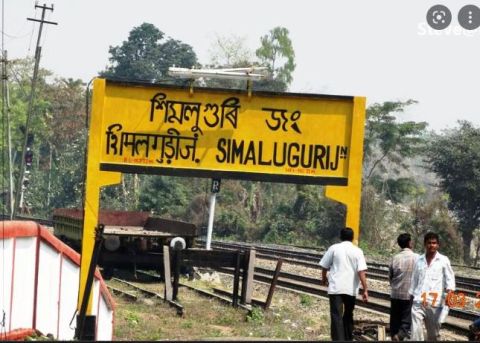In August 2022, the branch line from Dhansiri (in Assam) to Sukhovi (in Nagaland) was inaugurated. The Donyi Polo Express from Naharalagun (Arunachal) to Guwhati via Rangiya was extended to Dhansiri and Sukhovi, thereby linking Arunachal with Nagaland. The PR staff announced that Sukhovi was the first station in Nagaland, which was not correct.
The first stations in Nagaland were Rangapahar, Rangapahar Crossing and Dimapur on the main line from Lumding to Tinsukia. Dimapur started off as Manipur Road, then Dimapur Manipur Road in the 1970s and now Dimapur. The road from Dimapur to Imphal passed through Kohima in Nagaland.


Note that these signboards strictly follow the formula in other states-local language followed by English followed by Hindi. The local language is English.
The next station in Nagaland was Naginimora, on a branch from Simaluguri Jn in Assam. MG passenger trains were running on this route until at least 1994, but it closed soon afterward. Naginimora station was just over the border in Nagaland.

Then there was the short-lived MG line from Amguri Jn to Tuli. This was meant to serve a paper mill near Tuli, though it closed down after some years. It was planned to extend the line to Tuli Town.
However the MG line from Amguri to Tuli was converted to BG. There is no passenger service, though a small number of goods trains run for departmental use.


This is supposed to be the newly constructed BG station at Tuli.
And finally to the new line from Dhansiri to Shokhuvi. There is an intermediate station called Dhansiripar in Nagaland.


This line has a long way to go towards Zubza which will be the station for Kohima.









































